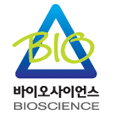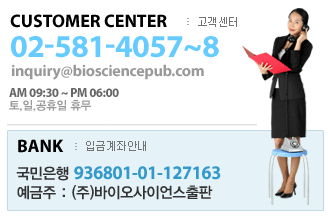Understanding Immunology is a well-established introduction to this complex subject for readers with no previous exposure. It is aimed primarily at undergraduates in biological sciences, biomedical sciences and medicine. The selection and order of topic coverage is designed to instruct effectively, and a variety of boxed examples add depth and historical context for those readers wanting to go beyond the essentials.
The first part of the book (Chapters 1 to 11) takes students through the pathogenesis of infectious diseases and describes the molecules, cells and tissues of the immune system that provide protection against a wide variety of pathogens. It also describes how mankind has utilised the immune system, from the development of vaccines to the production of reagents for use in the clinic and laboratory. The final four chapters describe how the immune system operates in disease situations such as allergy, autoimmunity and transplantation.
This third edition is revised to cover the latest experimental and clinical changes in the subject, particularly those in the development of lymphocytes; the different types of CD4 helper T cells; the use of antibodies, including monoclonal antibodies, as experimental and clinical tools; and immunological tolerance.
Dr. Peter Wood is a Lecturer in the Faculty of Life Sciences at the University of Manchester. He has over 20 years of teaching experience, both in the UK and in the USA, and is widely published in the literature. His current research interest is the role of cytokines in the development of diabetes.
Table of Contents
Contents
Preface
Acknowledgements
1 The threat to the body: the role and requirements of the immune system
1.1 The role and complexity of the immune system
1.2 Pathogens differ in size, lifestyle and how they cause disease
1.3 How do pathogens cause disease and what protection is there?
1.4 Conclusion
1.5 Summary
1.6 Questions and answers
1.7 Further reading
2 The immediate response to infection: innate immunity and the inflammatory response
2.1 The response to infection
2.2 The immediate response to infection – the innate immune system
2.3 Cytokines – hormones of the immune system
2.4 The inflammatory response and cell migration
2.5 Cell migration – through blood and into tissue
2.6 The inflammatory response
2.7 Systematic inflammation – involvement of the brain and liver
2.8 Opsonins cans
2.9 Interferons and natural killer cells
2.10 The innate immune response limits the early replication of pathogens
2.11 Summary
2.12 Questions and answers
2.13 Further reading
3 Specific immune recognition: B lymphocytes and the antibody molecule
3.1 Introduction to the specific immune system
3.2 Antibody structure
3.3 Recognition by antibody – antigens and epitopes
3.4 There are different antibody classes with different biological functions
3.5 Antibody can be secreted or expressed on the cell surface of B lymphocytes
3.6 Summary
3.7 Questions and answers
3.8 Further reading
4 T lymphocytes and MHC-associated recognition of antigen
4.1 There are different types of T lymphocytes
4.2 T cells recognise antigen through their T cell receptor (TCR)
4.3 The major histocompatibility complex
4.4 Recognition of antigen by T cells
4.5 Antigens must be processed before they can be presented by MHC molecules
4.6 Summary ;
4.7 Questions and answers
4.8 Further reading
5 Lymphocyte development and the generation of antigen receptors
5.1 The production of lymphocytes: lymphopoiesis
5.2 B lymphocytes are produced in the bone marrow
5.3 T lymphocytes finish their production in the thymus
5.4 During their development lymphocytes must generate huge numbers of Ig and TCR receptors with different antigen specificities
5.5 Developing lymphocytes rearrange their lg or TCR genes in a carefully controlled order
5.6 Why is there continuous production of lymphocytes, most of which die?
5.7 Summary
5.8 Questions and answers
5.9 Further reading
6 Anatomy of the immune system
6.1 Requirements of the immune system in vivo
6.2 Different pathogens require different types of immune responses
6.3 The anatomy of the lymphoid system promotes the interaction of cells and antigen
6.4 Lymphocytes continually recirculate through blood, tissues and lymphatic vessels
6.5 Summary
6.6 Questions and answers
6.7 Further reading
7 Anatomical and cellular aspects of antibody production
7.1 Overview of antibody production
7.2 Activation of CD4 T cells (0–5 days) &
7.3 Stimulation of B cells by antigen and their interaction with Th (0–5 days after antigen)
7.4 Formation of germinal centres (4–14 days after antigen)
7.5 MALT and the production of IgA
7.6 Summary
7.7 Questions and answers
7.8 Further reading
8 Effector mechanisms: dealing with pathogens in vivo (1) Antibody-mediated responses
8.1 Humoral and cell-mediated immunity
8.2 Antibodies provide protection in many different ways
8.3 Neutralisation by antibody
8.4 Antibodies can cause agglutination of microbes
8.5 Antibodies can act as opsonins and promote phagocytosis
8.6 Complement is a protein cascade with antimicrobial functions
8.7 Antibody and complement synergise to promote the opsonisation of microbes
8.8 Antibody-dependent cell-mediated cytoxicity (ADCC)
8.9 Summary
8.10 Questions and answers
8.11 Further reading
9 Effector mechanisms: dealing with pathogens in vivo (2) Cell-mediated immunity
9.1 Introduction
9.2 CD4 T cells develop into different types of helper T cells
9.3 CD8 cytotoxic T cells are important in intracellular infections
9.4 Delayed-type hypersensitivity and the activation of macrophages
9.5 Th2 responses are important against worms p;
9.6 Th17 responses involve high levels of inflammation
9.7 Different effector responses have different costs to the host
9.8 Summary
9.9 Questions and answers
9.10 Further reading
10 Immunological memory and vaccination, the production and use of antibodies
10.1 Immunological memory – the basis of immaturity
10.2 Vaccines induce immunity without causing disease
10.3 Antibodies can be produced and used in many ways in treatments and in tests
10.4 Summary
10.5 Questions and answers
10.6 Further reading
11 Immunological tolerance and regulation – why doesn’t the immune system attack ourselves?
11.1 Immunological tolerance – what is it and why do we need it?
11.2 Self-tolerance in B cells
11.3 Self-tolerance in T lymphocytes – selecting for recognition of self-MHC but not self-antigen
11.4 How do we maintain tolerance to self-antigens not expreseed in the thymus?
11.5 Summary
11.6 Questions and answers
11.7 Further reading &nbp;
12 Autoimmune diseases
12.1 Autoimmune diseases occur when our immune systems attack our own bodies
12.2 There are many different autoimmune diseases
12.3 Immunological features of autoimmune diseases
12.4 Both genetic and environmental factors contribute to the development of autoimmune disease
12.5 How is immunological tolerance lost in autoimmune disease?
12.6 Summary
12.7 Questions and answers
12.8 Further reading
13 Allergy and other hypersensitivities
13.1 Introduction
13.2 Type I hypersensitivity and allergy
13.3 Allergies result in a variety of clinical symptoms
13.4 Testing for allergy
13.5 Both genetics and the environment contribute to allergy
13.6 Why have IgE in the first place?
13.7 Treatment of allergy
13.8 Type II hypersensitivity
13.9 Type III hypersensitivity
13.10 Differences between type II and type III hypersensitivity
13.11 Delayed hypersensitivity and contact hypersensitivity
13.12 Summary
13.13 Questions and answers
13.14 Further reading
14 AIDS
14.1 History and incidence of AIDS
14.2 The human immunodeficiency virus
14.3 Clinical course of HIV infection
14.4 Immunological events associated with HIV infection
14.5 Chemotherapy can prolong the life of HIV-infected people
14.6 HIV has proven very difficult for vaccine development
14.7 Summary
14.8 Questions and answers
14.9 Further reading
15 Manipulating the immune system: transplantation and tumours
15.1 Introduction
15.2 Transplantation: from kidneys to faces
15.3 Using the immune system against tumours
15.4 Summary
15.5 Questions and answers
15.6 Further reading
{교재 사용시 강의 자료 문의 바랍니다.}
상품정보고시
| 제품명 |
Understanding Immunology, 3/E |
| 판매가격 |
34,000원 |
| 제조사 |
Prentice Hall |
결제후 2~5일 이내에 상품을 받아 보실 수 있습니다.
국내 최대의 물류사 CJ택배를 통하여 신속하고 안전하게 배송됩니다.
3만원 이상 구입시 무료배송입니다.
(제주도를 포함한 도서,산간지역은 항공료 또는 도선료가 추가됩니다.)
결제방법은 신용카드, 국민/BC(ISP), 무통장입금, 적립금이 있습니다.
정상적이지 못한 결제로 인한 주문으로 판단될 때는 임의로 배송이 보류되거나,주문이 취소될 수 있습니다.




